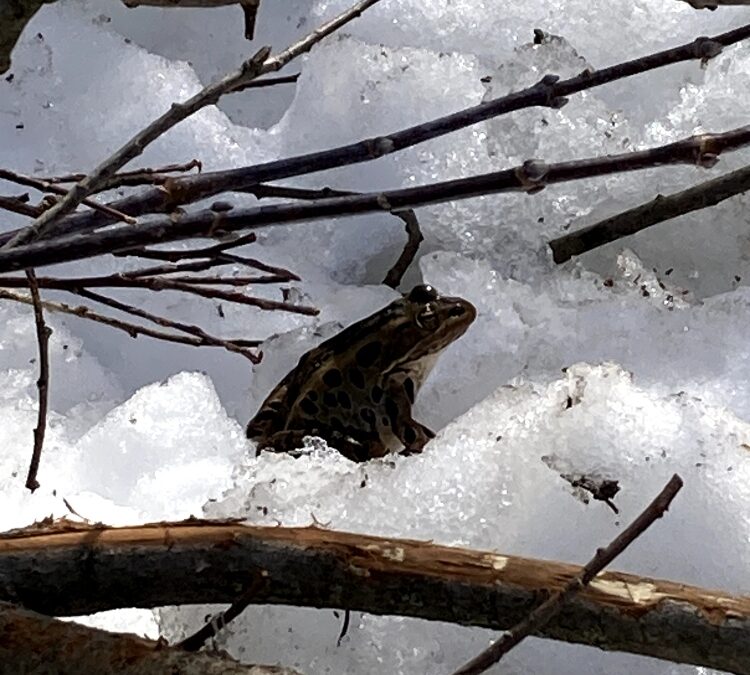Between winter and spring is confusing time for me and for the leopard frog in the feature photo, both of us itching to get out of hibernation when we feel some warmth. We found him chilling on a lingering snowbank during our Easter hike. The air temperature was 64 degrees F.
I tilled my Portland vegetable garden in February…
Not so in Central Wisconsin with frozen or cold ground until well into May. For about a month, temperatures are below freezing overnight, then above freezing during the day, often up to the 50’s or 60’s. Perfect conditions for making maple syrup.
Tapping trees is the first Spring activity in these parts…
… and quells my yen for working outside in February and March. First you drill a hole 3 feet above ground on the sunny side of a sugar maple trunk and hammer a tap in place. This year, sap started flowing immediately, so I hung the collection bag. I tapped only two trees this year because the flow was so strong. It only took ~24 hours to fill my two bags! I strain the sap through cheesecloth into my stock pots.
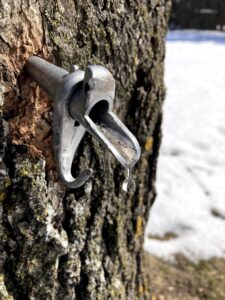
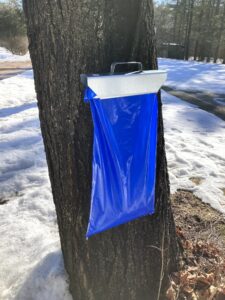
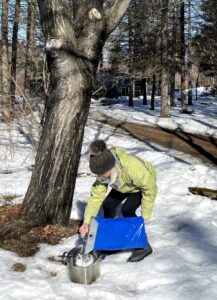
Most sap tappers evaporate their sap outside overnight in a propane or wood-burning contraption that holds 10 gallons of sap. A good stove top ventilation system makes it possible to do this inside without steaming up your windows or accidentally removing your wallpaper. It is an hours-long process of reducing the volume and combining into a smaller pan, until it reaches a golden color. Depending on your level of dedication and precision, you can use a hydrometer, hydrometer cup, etc. to determine the finish line for maple syrup.
Or use your eyes and a cold plate…
When the sap is about 5 percent of the original volume, I watch for bubbles to slow, then foam up as the sap boils over medium heat. I do a drip test, placing a small amount on the edge of a cold plate. Hold the plate vertically and watch the drip. If it quickly rolls to the bottom of the plate, keep on boiling and watching the pan for 3 more minutes.
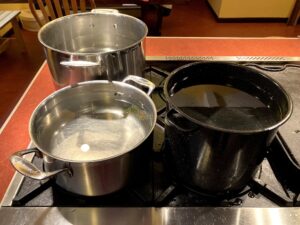
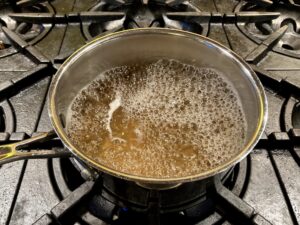
It’s ready to bottle…
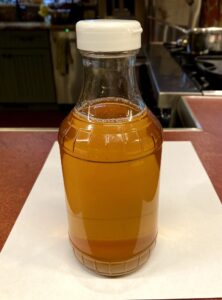
…when golden color deepens and the test drip stops halfway down the plate. The proportion of sap to syrup depends on sugar content of the sap, typically 40:1. This year I got 2.5 quarts of syrup from about 6 gallons of sap, about an outstanding 16:1.
A sweet interlude and another local product for the pantry while waiting for the thaw.
Photos by SAM and Bob Steiner 2023

